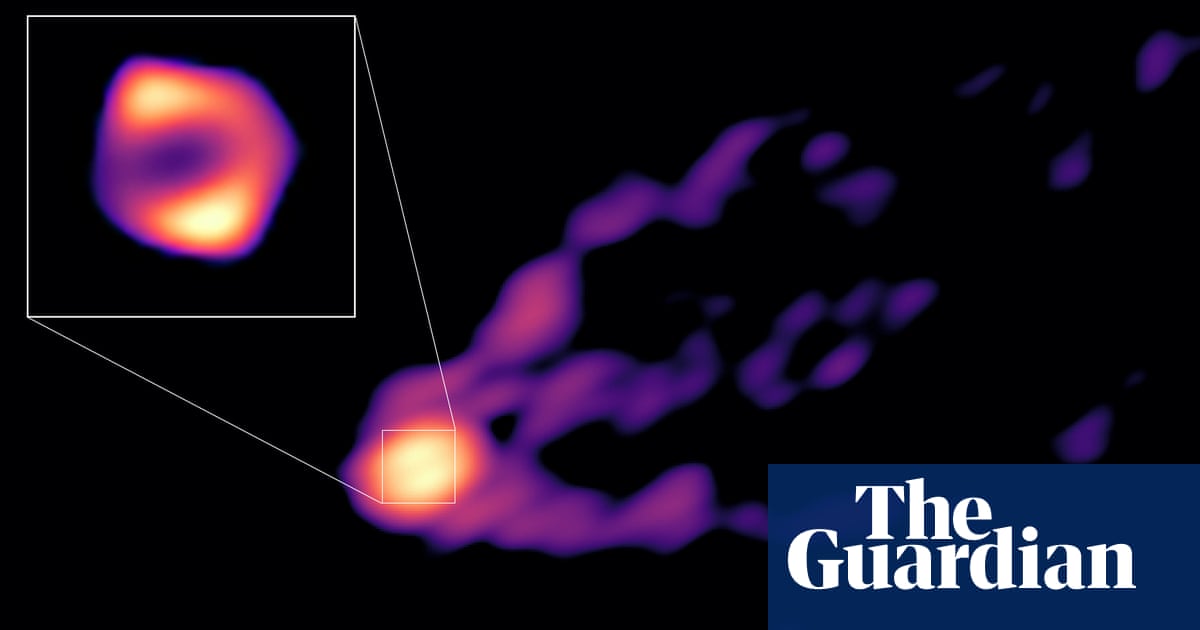
The first ever image of a black hole was revealed to the world on Wednesday by the international project known as the Event Horizon Telescope. The picture had been kept a secret; indeed, no one other than the members of the international collaboration that did the work had seen the image prior to the press conference — not even the director of the US National Science Foundation, which had contributed $28 million to the project.
Black holes are among the most fascinating objects for humankind, judging by the popularity of certain movies, documentaries, YouTube videos, articles and lectures by astrophysicists like me. And, when the black hole is a “supermassive” one, millions or billions of times more massive than the sun or other stars, the public’s imagination and bewilderment reach their highest levels. Indeed, the two targets of this imaging project were the monster (“supermassive”) black holes at the center of our Milky Way and in the M87 galaxy. The first one sits 26,000 light-years away and is 4 million times heavier than the sun; the second lies 55 million light-years away and is 6 billion times more massive than the sun.
Needless to say, when the press conference was announced, about a week ago, the expectations were high. But there were two disappointments from the presentation: First, no image was produced of the black hole at the center of our galaxy (the project director said that image is much more complicated and will take more time to produce); second, at least for the general public, while the image that was released for the monster black hole at the center of the M87 galaxy showed a dark round “hole” in the middle, the rest of the image looked a bit too fuzzy and not as impressive as the simulations had predicted.
In order to understand this, one needs to recall that, even though the M87 black hole is a monster (about 40 million kilometers across), it lies at 55 million light-years (520 billion billion kilometers). Taking a picture of it (or of the disk of matter swirling, falling and radiating around it) is equivalent to taking a picture from earth of an apple on the surface of the moon. And that is why the project required dozens of radio telescopes, distributed over eight locations around the globe, from Antarctica to Europe, North America, Hawaii and South America, all working together. Indeed, it is this “working together” that represented the extraordinary technical challenge — and achievement: Combining signals from dozens of radio dishes in synchronicity to within a billionth of a second, which required atomic clocks.
And if that was not enough of a technical challenge, the amount of data that was collected was staggering (more than 5 petabytes, which is 5 million gigabytes), requiring hundreds of high-capacity hard drives and needing to be collected and stored at a rate of 16 gigabits per second. Combining the big data from the different radio telescopes required special supercomputers. “Correlators” were designed and built for that purpose, one of which was developed by the Massachusetts Institute of Technology for the Event Horizon Telescope and another by the Max Planck Institute for Radio Astronomy in Bonn, Germany, for the other group collaborating in the project, the GMVA.
Until now it was impossible to tell which was right, but the image that was released on Wednesday was totally consistent with Einstein’s predictions: Another score for the great man.
Nidhal Guessoum
Once we understand the complexity of the task, one is not only highly impressed with the team and its achievement, but one also understands why it took two full years between the observations and the release of that first image.
Now, in addition to the technical achievement, there were important scientific objectives behind this big, expensive project. First, this is the first time that theories of gravity (Einstein’s general relativity and others) have been tested in such strong-gravity environments. Indeed, Einstein’s theory and equations predicted that event horizons around black holes are circular, while other theories of gravity predict squashed ones. Until now it was impossible to tell which was right, but the image that was released on Wednesday was totally consistent with Einstein’s predictions: Another score for the great man.
Secondly, movies like “Interstellar” notwithstanding, this was the first time we had targeted a supermassive black hole. We don’t quite understand their origin and formation, their interactions with the galaxies that surround them, why some of them produce jets and others not, why some have flaring activity and others are “quiet,” and other questions that will now have a chance of being investigated more directly. Indeed, until now, we only had indirect measurements of activity around black holes (in the disk of in-falling matter, before it crosses the event horizon and disappears forever).
There is no doubt that this was a huge achievement, both technically and scientifically. As with all first breakthroughs, they may not be hugely impressive to the layman, because the first success in any endeavor, like the first flight of the Wright brothers, is always small and awkward. But greater and more potent results will come soon, and this first step will be seen as a quantum leap in science.
Nidhal Guessoum is a professor of physics and astronomy at the American University of Sharjah, UAE. Twitter: @NidhalGuessoum
Disclaimer: Views expressed by writers in this section are their own and do not necessarily reflect Arab News" point-of-view












